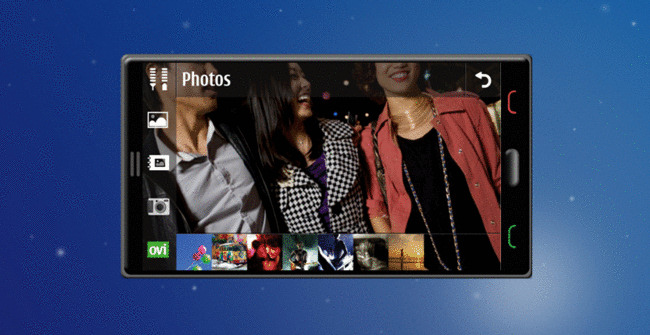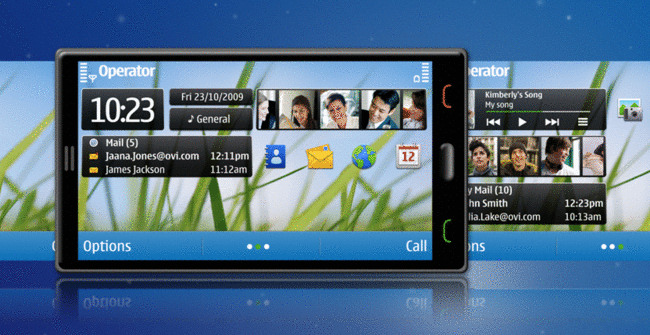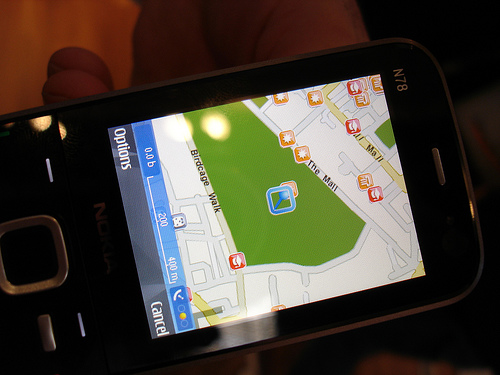
Andy writes (omitting comments which are specific to the show and to other matters):
"I'm an electronics design / production engineer with a background in analogue and radio frequency electronics, which gives me a great insight into the inside workings of a phone. For the past 20+ years I've been involved in the design and manufacture of Unmanned Aerial Vehicles (target drones), which brings together many of the engineering aspects you'll find in a phone - digital electronics, analogue electronics, radio frequency links, both data and Video and GPS location. The complexities of getting these disparate elements to play nicely together is something I have a lot of experience with."
"On the subject of voice operation, which Steve touched on, I've been very impressed with the new features in the Milestone 2.1 update - with the car dock there's a Nuance-based speech command engine which allows a lot of clever functionality, voice commands to dial calls, play music, dictate sms or email messages etc. It also finally brings the full hardware functionality of my Jabra BT earpiece to the Milestone (initiate calls etc. from the hardware buttons). This is one of the things I'd been missing from my Nokia and I have to say the Milestone trumps Nokia's speech capabilities easily. It feels strange at times as the speech engine confirms commands if there is any doubt and you end up having a conversation with the phone!"
Fascinating. I too have a Milestone and have only just upgraded to Android v2.1. Nokia's voice command system has been stuck in concrete for the last 3 years and it would be great to see Symbian enable a similar sort of ground-up speech interface, for both voice-to-text and for genuine hands-free control. There's certainly enough processing power in the next generation of Symbian handsets, not to mention dual microphones and noise cancellation algorithms, for easier plucking of voice from the ambient background noise...
"It has been interesting reading your recent articles in defence of Symbian-based phones recently - I get the impression you feel like you're under fire a little, but your articles are always interesting, factual and balanced in my view and I understand your reasons for sticking with the Symbian platform and appreciate its benefits, even if I personally find its limitations a frustration.
One thing I do feel strongly about though is that Nokia/Symbian really MUST get their user interfaces sorted out and from what I've seen of the N8 it doesn't look like Symbian^3 is really breaking the mould, despite the utterly desirable hardware specs. I'm reading good stuff from Symbian on UI design and look forward to what comes in the future, but Nokia really have to understand that old adage that first impressions last. We can rave all we want as engineers and technically capable users about clever hardware, battery life etc. but the first thing the average end user sees, after the phone form factor, is the UI, they interact with the UI and for all practical purposes the user interface IS the phone."
It's hard to appreciate from the raw screenshots just how much work has gone into Symbian^3. Certainly at the UI level, the static shots don't look much different, but in fact the whole user interaction paradigm has been changed. Every single instance of the 'scroll and select' paradigm* has been reworked or simply ripped out, with a modern 'direct manipulation' paradigm instead. In fact, comparing Android 2.1 and Symbian^3, from my early looks, the interface on the latter is more intuitive and more direct - Android is heavily reliant on old fashioned 'Settings' menus in each app, none of which look anything like each other.
|
* 'scroll and select' refers to the way many UI instances have a list of things (entries/photos/contacts etc), one of which needs to be selected and then eitheran Options menu function or the default action applied. But because the UI doesn't know which of the two you want, the 'select' and 'action' parts are kept separate - hence you often end up double-tapping if you actually want to 'do' the default action. This system makes sense from an engineering standpoint but is a bit of a usability nightmare, if only because it introduces uncertainty to the new user as to what's expected of him or her - some screens have no programmed 'Options' and so use single-tap. In Symbian^3, the problem is worked around by having more on-screen buttons (to replicate the most-used 'Options' menu functions) so that a single-tap paradigm can be everywhere. Where more functions are needed, a 'More' button can be used. Where more than one action is possible, other actions are made available using a long-press on the appropriate item. |

Andy continues:
"If that experience continues to be as dire as it is at present, Nokia will find their commanding lead in the world of high end smartphones disappearing in my view. You mentioned the customisable nature of Symbian phones recently but my experience is my Android phone is way more configurable, in ways that affect real useability, than my Nokia ever was. This ignores the fact that it's usability out of the box is so much better to start with."
I'd disagree with that, actually. I've had numerous Android phones here and have owned a Motorola Milestone (with Android 2.1 now) for ages. Yes, the homescreen system is supremely flexible, in terms of look and where you put your widgets. But the main applications folder is 'all in one' and sorted alphabetically. It's frustrating to have to keep bringing up this long list and scrolling to the very bottom, every single time. S60's system of having nested applications folders, where any icon can be anywhere in any folder, is far more customisable. Ideally, of course, you'd have both in an OS - the multiple widgetised homescreens and the nested applications folders - which is hopefully where Symbian^3 and the likes of the Nokia N8 come in.
"I've been guiding a few people recently in their quest for new phones and I've been open in pointing people at newer Nokia devices and highlighting their many advantages (battery life, great cameras, good multimedia support and solid hardware) as well as Android and the iPhone. Android really seems to be winning at present, three out of three people have opted for the HTC Desire and their descriptions once they get it are full of superlatives - compare this with the others who've recently acquired an X6, N97 and N97 mini's; most are reasonably happy with their devices, but there's nowhere near the same level of passion surrounding them. These users are a company's best advertisements and Nokia are missing a trick here in my view."
Absolutely. The HTC Desire is a very impressive bit of hardware in many ways - I can see why the new users are delighted with it. We'll leave aside the much publicised N97 for now (enough already), but let's take the N97 mini instead. At £330 (inc VAT) nowadays, around 80% the price of the Desire, the N97 mini has better build quality, a far better camera, plus that full qwerty keyboard - you'd have to agree that these make it a damn good alternative to the Desire's all-touch approach. But yes, the uncertainties of Symbian^1, mentioned above, dull the Symbian experience a little. Again, Symbian^3 and the use of an OLED screen in the N8, at a similar price point to the N97 mini, should see top end user satisfaction significantly improved.
"The best way I can describe my view of the current Nokia experience is that it's a chore. *Everything* with few exceptions takes too many button presses out of the box or needs too much digging in obscurely hidden menu's to work, or too much tech know how to make things work."
You're exagerating, but I do take the point. Setting up a Nokia smartphone currently involves half a dozen little 'tweaks', setting up access points, adjusting priorities, setting Bluetooth pairings as 'authorised', and so on. More of this needs to be automated, handled invisibly or actioned after prompting the user with plain English questions. Ultimately, a Symbian-powered smartphone can be a lot more customisable than, say, an iPhone, but Symbian do need to strive for iPhone-like ease of use and hassle-free operation.
"From my earliest, simplest non-Symbian Nokia's, to my Nseries experiences, they have all been a disaster in my view. The latest touch screen devices are little better and having seen colleagues new to Symbian struggle with devices like the N97/N97 mini I'm glad I didn't chose to continue on that road."
'Disaster' is way too strong a word for a series of smartphones that has sold to the tune of several hundred million. In terms of struggles with the N97, 90% of user frustration with this comes from the stupidly low space on disk C: - Nokia have held their hand up here and agreed that this is a big problem - why is why they stuck another 256MB chip in the N97 mini, which I still rate as a powerful, well-built and compact device.
"The inconsistency drives me mad too - all the Android devices I've used, despite the frequent discussion around fragmentation, are pretty consistent in menu features and location. Each Nokia changes from one device to the next it seems. If this were accompanied by simplification and ease of use it would be acceptable, but it rarely is."
I'm assuming you're talking about the way the application icons (and their folders) are presented in subtly different, never-in-the-same-place-twice fashion between different S60 models? This is an arguable point - Nokia often shuffle things around so that the applications they think the user of a particular device will appreciate (as determined by the device's marketing and sales pitch) are presented first. This works well for general users (the vast majority) but can briefly annoy power users who jump from device to device. Application icon order has never bothered me - it's the work of only a couple of minutes to move my most used application icons up to the root folder.
"Try setting up a mail for exchange account on a Nokia, then do the same on Android or iPhone as a clear example of this; the latter two are a pleasure, the former an effort, even if you can even find all the settings you need, and get through obscure error messages on the way. The really frustrating thing about this is it's relatively trivial to improve!"
Though it has improved slightly in recent years, I absolutely agree that email and sync setup on Symbian phones needs more built-in intelligence. And if I have to hear @timsalmon ranting about the lack of Google sync on Symbian one more time...
"As an engineer with a very technical perspective and a wealth of experience even I find it hard, how is poor old Mr. Average to cope? I've become tired of such poorly designed interfaces on products - I want my hardware to work well, but have the flexibility and power underneath, for me personally Android fits this bill where the iPhone would not as I'd find its closed nature too restrictive. I believe Nokia could really be capitalising from their excellent hardware skills, if they took this more seriously."
I think they are taking this more seriously and that Symbian^3 will show the results of their efforts here. And, to be fair, the interfaces on devices like the Nokia N95 and Windows Mobile touch smartphones of the day seemed up to the job right until the iPhone showed up. Steve Jobs was right in that the iPhone was years ahead in terms of interface simplicity (though he was wrong in other ways - the iPhone was years behind in terms of basic OS functions and hardware specs) - you're right in that Mr Average should be able to pick up any smartphone and plug in his or her username and password and everything should just start working 'auto-magically'.
I'd disagree with your love of Android as the be all and end all here though - having used Android extensively, I'd say that it has almost as many quirks as Symbian.

"I took part in some recent Nokia customer research recently on Ovi maps and it came to light that one of the reasons for the research was that the move to the new version of Ovi Maps had not resulted in an improvement in customer perception/feedback surrounding the product. When asked why this was, the fundamental answer from me was that it was because there really wasn't any significant development in ways the modern smartphone user cared about. Look at any TomTom satnav and see its ease of use and simplicity - I believe almost anyone can pick one up and start to use it, without even touching a manual, it's very Apple in its simplicity. Try entering an address on Ovi maps and tell me it's as simple. Then compare both to Google maps on Android and see how it can be used by any app on the phone to provide clever, location aware services that impress. The same is not true currently for Ovi Maps, despite it's other clear advantages, like pre-loaded maps."
Again, I think you're exaggerating things. To search for an address in Ovi Maps, I enter a postcode and press 'Search'. Doesn't seem hard to me. Nokia have had issues in the past with their online databases of destinations not being 'fuzzy' enough, i.e. you had to get things exactly right - plus their databases weren't as complete as Google's. The current situation does seem to have improved markedly though and searches for all sorts of places in Ovi Maps in recent months have all come up with proper matches.

"I think Nokia are very late to the socially-networked, location-aware experience, despite having all the hardware capabilities to be up there with the best and it seems that this lack of inter-operability is a fundamental limitation of the current Symbian platform; do you know an application (outside of Ovi Maps itself) that uses Ovi Maps as its core for displaying location-aware data? I'm aware that there is an API that's available now on the later Maps versions, so maybe this will accelerate things, but it always feels a disjointed experience on a Nokia phone, compared to the ease of inter-application communication available on Android."
We've seen apps like Ovi Contacts which do link directly into Maps, but yes, the system could be used by more apps, I agree.
"I really hope Nokia do progress here, their hardware is in most cases technically excellent, although in feel it's sometimes let down by materials which from an engineer's perspective I appreciate are clever design decisions, but which to the uninitiated end user feel cheap and creaky. It's another example where sometimes the 'best' solution from an engineer's perspective, isn't the best solution to the users perception, and thereby for the future of the product and brand."
Agreed 100%.
"Biggest bug-bear at present on my Motorola Milestone is the battery life (the Milestone screen is a killer, noticeably worse than the OLED screen in the Legend/Desire). Its standby life and call time is fine, but when using that large screen the battery is sucked dry in no time. With rare exceptions the Milestone screen is always the single largest user of battery power as viewed in the Android battery use panel, compare this with the Legend where it's rarely at the top of the list."
TFT screens on max brightness do drain a lot of power. The secret on the Milestone is to always leave the screen on 'auto-brightness' - and I've left this bit in, despite this being a Symbian themed site, because this brings me nicely to a rant. The Symbian-powered Samsung i8910 HD has an 'auto-brightness' setting - and it works superbly (as on the Milestone). So why the HECK can't we have a similar system on Nokia-made devices? It's not rocket science. I've yet to use a single Nokia phone where there was a working, power-saving, auto-brightness system. Mutter...
"If only there was a solution to the sunlight problem..."
There is. It's called using a transflective screen. This is used to great effect by the iPhone - and by most Nokia S60 (and Series 80, before that) smartphones over the last 8 years, most of the aforementioned few hundred million units. The Milestone (and many of the modern Symbian-powered touchscreen phones) are just hopeless out in the sun, I completely agree. And this was one of the reasons I kept championing the Nokia N97 classic (despite its other issues!) - the use of a transflective screen meant that it wasn't a total disaster in direct sunlight. Not a patch on the iPhone's (or non-touch S60 devices), mind you, because of that blessed resistive touch layer, but better than your Milestone or the Nokia N97 mini/5800/X6 etc.
"Sorry I ranted on a bit there, but hopefully some of it will be useful points for discussion in a future Phones Show Chat?"
Regards, Andy Weekes.
Very many thanks for writing in and for agreeing to have your letter dissected here on AAS!
Steve Litchfield, All About Symbian, 24 May 2010

